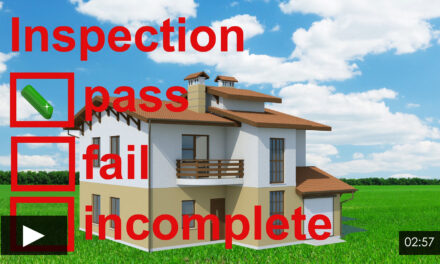What is a nonjudicial foreclosure?
A lender or carryback seller holding a note secured by a trust deed in default has two foreclosure methods available to enforce collection of the secured debt. These two foreclosure methods are:
- a judicial foreclosure sale, also called a sheriff’s sale [Calif. Code of Civil Procedure §726]; or
- a nonjudicial foreclosure sale, also called a trustee’s sale. [Calif. Civil Code §2924]
The key to the trust deed holder’s ability to nonjudicially foreclose by a trustee’s sale on the secured real estate is the power-of-sale provision contained in the trust deed.
Other security devices used to create a lien on real estate to secure a debt which may also contain a power-of-sale provision include:
- a land sale contract [See RPI Form 168; Petersen Hartell (1985) 40 C3d 102];
- a lease-option sale [See RPI Form 163 §19];
- a UCC-1 financing statement [Lovelady Bryson Escrow, Inc. (1994) 27 CA4th 25]; or
- the conditions, covenants and restrictions (CC&Rs) of a homeowners’ association (HOA) for collection of assessments. [CC §1367]
The grant of the power-of-sale provides a private contract remedy for the recovery of money.
Related video:
The power-of-sale is voluntarily agreed to by the owner of the secured property, authorizing the secured creditor on a default to hold a nonjudicial foreclosure sale by public auction. [CC §2924]
However, if the note evidences a recourse debt with a remaining balance exceeding the fair price of the mortgage holder’s security position in real estate, the mortgage holder may choose a judicial foreclosure. A judicial foreclosure allows the lienholder to seek a money judgment for any deficiency in the property’s value to satisfy the debt.
Related video:
However, by foreclosing under the power-of-sale provision, the lienholder avoids a costly (and potentially time consuming) court action for judicial foreclosure.
Who conducts the sale
A trust deed is a security device which imposes a lien on real estate. The trust deed creates a fictional trust which appears to “hold title” to the secured real estate for the benefit of the lienholder.
Thus, a trust deed has three parties:
- at least one trustor (the owner(s) of the secured real estate);
- a trustee who need not be named; and
- at least one beneficiary (a lender, carryback seller, HOA or other lienholder).
The trustee’s sale is conducted by the trustee who is either:
- named in the trust deed; or
- appointed by the beneficiary of the trust deed at the time the beneficiary initiates the foreclosure process.
A broker, attorney, trust deed service or subsidiary of the lender may be appointed at any time as the trustee. Frequently, the lender appoints itself as the trustee.
The trustee begins foreclosure proceedings by recording a notice of default (NOD). The trustee ends the process on delivery of the trustee’s deed and the disbursement of any sales proceeds. [Bank of America National Trust & Savings Association v. Century Land & Water Co. (1937) 19 CA2d 194]
Generally, trust deeds are prepared and distributed by title or escrow companies naming their corporation as the trustee. However, a trust deed or other security device does not need to name the trustee at all. The beneficiary later simply appoints a trustee to handle the NOD or reconveyance. [See RPI Form 450]
Also, the beneficiary may appoint a substitute trustee to replace the trustee named in the deed.
Pre-foreclosure workout prior to NOD
Before recording an NOD on a trust deed securing a purchase-assist mortgage on a borrower’s principal residence, a mortgage holder needs to conduct a pre-foreclosure workout with the owner.
At least 30 days prior to recording an NOD, the mortgage holder needs to contact the borrower to:
- assess the borrower’s financial situation;
- explore options for the borrower to avoid foreclosure;
- advise the borrower of their right to an additional meeting within 14 days to discuss their financial options;
- provide borrowers with the toll-free Department of Housing and Urban Development (HUD) phone number to find a HUD-certified housing counseling agency; and
- in the event personal or phone contact cannot be made, the mortgage holder is to exercise due diligence through further attempts to contact the borrower.
If the mortgage holder is unable to make contact with the borrower, the mortgage holder sends the borrower a certified letter, return receipt requested, containing a toll-free number with access to a representative during business hours.
Related video:
The stages of foreclosure
A trustee’s actions under a power-of-sale provision are strictly controlled by California statutes.
To successfully complete a trustee’s foreclosure sale, the trustee and beneficiary of the trust deed are to adhere to the procedures fully detailed in the foreclosure statues for handling a trustee’s sale. [Garfinkle v. Superior Court of Contra Cost County (1978) 21 C3d 268]
The foreclosure process has three stages:
- the notice of default (NOD) is recorded and mailed;
- the notice of trustee’s sale (NOTS) is recorded, posted, and mailed; and
- the trustee’s sale of the real estate by auction, followed by the execution of the trustee’s deed and distribution of sales proceeds.
While the trustee is concerned about the three stages for processing the foreclosure, the owner of the real estate and the beneficiary are concerned primarily with two different periods of time which control repayment of the debt obligation:
- the reinstatement period, which runs from the recording of the NOD and ends prior to five business days before the trustee’s sale; and
- the redemption period, which also runs from the recording of the NOD but ends with the completion of the trustee’s sale of the secured property.
Related video:














